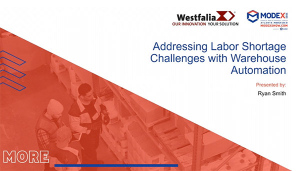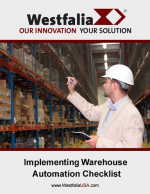Easing Recall Burdens at the Warehouse
From reports of cashews tainted with Salmonella, to beef patties contaminated with wood, to spinach containing allergens, to the now infamous Chipotle Mexican Grill E.coli outbreak, recalls and foodborne illnesses are regular fixtures in today’s news.
Recalls are costing food manufacturers millions of dollars and negatively affecting companies’ brands—a July 2015 report from Swiss Re, a reinsurance company, estimates that half of all food recalls cost the affected companies more than $10 million. As more industry and government regulations, such as the
Food Safety Modernization Act (FSMA), come into play to reduce recalls and prevent illnesses, food professionals are looking for ways to comply with these standards and advance their food safety efforts. A good place to start is by tracking and tracing goods with warehouse automation technology.
Traceability Using Warehouse Automation
Warehouse automation technology is proving effective in helping food manufacturers and distributors reduce and prevent detrimental recalls through advanced track-and-trace capabilities. One of the most powerful tools enabling traceability is a warehouse execution system (WES).
Typically, companies have relied on two separate software applications—a warehouse management system (WMS) and a warehouse control system (WCS)—to manage inventory and materials handling throughout a facility. However, a WES can combine the functionality of a WMS and WCS in a single application to optimize, manage, and control internal material flow and order picking without the need for complex integrations.
With a WES, food professionals can track inventory or raw materials (and any number of attributes, such as lot numbers, temperatures, etc.) throughout a product's life cycle. The system logs the product’s every move until it is loaded onto a truck for delivery.
This creates an audit trail of every person and piece of equipment that touched that inventory, as well as every adjustment made along the way. But, tracking and tracing capabilities go beyond the product’s movement within the warehouse’s four walls.
Utilizing its flexibility to interface with other software systems like enterprise resource planning (ERP) and host systems, a WES can also capture batch data from the growers and manufacturers, and marry the data with the lot information created during processing. Then, the system carries that data throughout each subsequent step in the supply chain—from storage, to packaging, to transportation, to the retail store shelf.
What’s Related



Favorites





